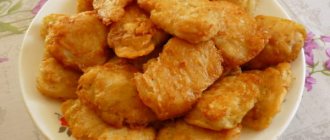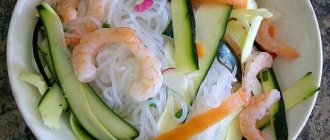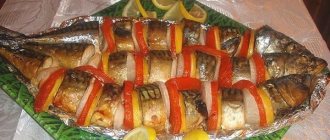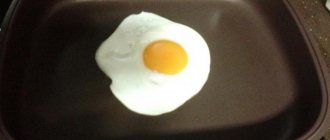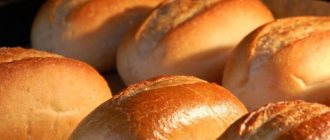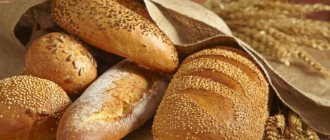Diet of Tibetan monks
Residents of Tibetan monasteries adhere to a certain philosophy of life. They have developed the following eating habits:
- The diet is based on lacto-vegetarianism, dairy products and foods of plant origin are allowed.
- The daily diet consists of fresh foods, which allows you to maintain your figure and health.
- The entire set of dishes is divided into several small portions, chewed thoroughly and slowly.
- Between the main techniques you can only drink water, you cannot eat anything.
- The diet is combined with breathing exercises or exercise in the fresh air to keep the body in good shape.
Diet features
A low-calorie diet ensures the health of residents of Tibetan monasteries. Nutrition Features:
- monks do not eat meat because they are supporters of Buddhism;
- in the diet of monastery residents there is no sugar, salt and other food additives that clog the body;
- Tibetan monks eat barley cakes, use butter from yak milk to prepare dishes and drink Tibetan tea;
- During the harvest, carrots, potatoes, and turnips are added to the menu;
- Sometimes Tibetan monks eat rice to cleanse the body.
How to make your own tsampa?
Today you can buy tsampa in stores. Entrepreneurs, usually from those nations for which dishes made from barley flour are traditional, have opened the production of this useful product.
People who respect the roots and support the traditions of their people are worthy of respect. Thanks to them, we not only receive information about the food culture of different nations, but also have the opportunity to purchase natural, high-quality and healthy products.
If you can’t buy, don’t be upset. Making tsampa at home is not at all difficult; in fact, it is even healthier. Dry the washed barley groats on a towel and gently fry in a frying pan without oil (it is better not to overcook than to overcook). Grind in a coffee grinder and the tsampa is ready!
Even if you don’t find barley in the store, buy pearl barley. Pearl barley, if you didn’t know, is polished barley. Due to the processing, there is less fiber in pearl barley, but other beneficial properties are almost enough to get the main benefits of this product.
Using the proposed simple recipes for preparing tsampa, everyone can change them to their own taste, adding different ingredients and changing cooking methods.
Principles and rules of diet
The diet is in many ways similar to regular healthy eating. The key principles of the diet are as follows:
- food should be consumed in a certain sequence, for better absorption by the body - first they eat food of plant origin, then dairy and fermented milk, and lastly fish, poultry, meat;
- you cannot engage in extraneous activities while eating - conversations or work distract from the main thing;
- Tibetan monks believe that high-quality absorption of microelements by the body is possible only with full concentration on foods;
- residents of monasteries are encouraged to drink up to 2.5 liters of cool water per day to remove toxins from the body and improve digestion;
- It is more correct to consume everything raw, but some heat treatment of products is allowed - baking, stewing, boiling, steaming;
- You can eat no more than 3-4 foods at one time, for example, bread with cheese – 2 foods, chicken breast with carrots and cabbage – 3.
The key feature of Tibetan nutrition is the complete rejection of food of animal origin and the transition to plant products. To achieve results you need to know the main rules:
- It is forbidden to eat eggs and meat during the diet; you need to increase the amount of vegetables and fruits; sometimes you are allowed to eat fish in small quantities;
- You need to eat food in small portions to avoid stretching the stomach and unnecessary stress on it;
- Tibetan medicine is against quick snacks, so you need to chew food thoroughly;
- in the intervals between meals, you can drink still water (mineral, spring), but you cannot eat;
- the diet should consist of fresh produce;
- the Tibetan diet completely excludes fried foods;
- combine proper nutrition with exercise or meditation in the fresh air;
- you can consume fermented milk products (kefir, yogurt, yogurt), and you can add young cheese, cheeses and homemade cottage cheese to salads - these products will help the beneficial substances be absorbed faster;
- liquid can be drunk no earlier than 2 hours after a meal or 30 minutes before it;
- the last meal should be no later than 1.5–2 hours before bedtime;
- the diet includes 3 main meals, and portions should be moderate.
The benefits and harms of tsampa
Roasted barley flour contains many useful microelements - magnesium, iron, selenium, zinc, copper and others. With poor nutrition in the mountains and steppes, the benefits of tsampa are invaluable in the fight against anemia. Proteins, carbohydrates and dietary fiber are found in barley in the correct proportions.
Tsampa, with its beneficial properties, helps dissolve salt deposits in joints, is useful for older people suffering from arthritis, improves digestion and promotes weight loss.
Eastern medicine recommends tsampa for the treatment of anemia, diabetes, lung diseases, sclerosis, and edema. And also for male impotence. Tsampa strengthens the immune system and those who consume it regularly suffer from fewer colds.
Vegetable protein, which is abundantly contained in tsampa, helps to withstand heavy physical activity. And yet, barley contains a lot of phosphorus, which is very necessary for brain function. The benefits of tsampa have been tested by time, one might say, thousands of years and difficult conditions.
Barley flour has a peculiar taste that not everyone likes. But unlike the Tibetans, we have a large selection of products and seasonings that will help dilute this taste. These are honey, cane sugar, candied fruits, condensed milk, ice cream, confitures, various sauces, and so on.
Keeping in mind the benefits of tsampa, it’s worth trying and using your imagination and culinary experience. And then you will be able to find your own unique recipe for preparing tsampa and dishes from it, which you will share with friends and relatives.
Nomad tea
3-4 tablespoons of brick tea, grind and add a liter of water. Bring to a boil, then add 2 cups of milk and a spoonful of melted butter. After that, pour 100 grams into the drink. tsampa and bring to readiness. If desired, add salt to taste.
Tsampa flatbread
Using your proven recipes for making flatbreads with kefir or milk, you can make this dish much healthier. Replace one third of the regular flour with tsampa. There is no need to change the proportions of the remaining ingredients. A good opportunity to please your family with a new dish.
Tsampa porridge
Check out this simple recipe! It will really help save such important morning time.
Making tsampa porridge for breakfast. Pour 2-3 tablespoons of it, 1 spoon of sour cream, a little tea with milk and sugar to taste into a deep cup. Stir thoroughly. The thickness of the porridge can be changed as desired by adding tea.
1. Modern recipe: mix tsampa with melted butter, add nuts, candied fruits, honey. Knead and form into balls. After cooling, the dessert is ready.
2. Place potatoes, carrots and onions into boiling meat broth. Salt and pepper to taste. Five minutes before it’s ready, add the greens and a handful of tsampa. Mix well and give a little time for the flour to swell.
3. Chicken in batter. Prepare the batter - a quarter cup of tsampa, a quarter cup of wheat flour and two eggs, salt and a little water. Beat to the consistency of sour cream. Beat pieces of chicken breast, dip in batter and fry on both sides until cooked.
4. Chocolate sausages. Add tsampa, cocoa powder, and melted butter to the crushed cookies. If desired, you can add walnuts or roasted and peeled peanuts. Sugar as desired and to taste. Knead thoroughly and form into sausages. For ease of shaping, you can use cling film. Place in the refrigerator overnight.
Advantages and disadvantages
The Tibetan diet has many more advantages than other diets for weight loss. Key benefits:
- the absence of meat products reduces the calorie and fat content of the diet, reduces the body’s contamination with metabolic waste;
- the technique shows good results - losing 4-5 kg in 7 days of eating plant foods and avoiding unhealthy foods;
- the body is completely cleansed of toxins, free radicals, salts, and excess fluid;
- metabolic processes in the body are improved due to easily digestible products;
- productivity increases, brain function, spiritual and physical condition improves;
- During the Tibetan diet, the body is mineralized and vitaminized;
- the functioning of internal organs improves due to products of plant origin;
- body cells are restored due to healthy food;
- you can get rid of diseases of the nervous, cardiovascular and excretory systems;
- The diet is combined with physical activity, which guarantees skin tightening during weight loss.
A huge list of positive qualities inspires confidence. There are only three disadvantages:
- Meat lovers may experience weakness as a result of completely avoiding animal protein.
- A low-calorie diet provokes a slight feeling of hunger.
- You cannot lose many kilograms at once on this diet; you will have to repeat it or change your usual diet.
Nutrition in Buddhism
But such violent feats of fasting were not only not obligatory for monks, but experienced elders even warned against them. Pimen, who in his youth ate only once a week, advised others to eat every day. Other elders[40] said the same thing. Siklitik said: “An excessively burdensome asceticism emanates from the enemy. Let there be one rule of fasting at all times. The property of true asceticism is moderation”[41]. Followers of the Buddha's teachings sacredly honor the principle of ahimsa - non-appropriation of pain, suffering and acts of violence. According to this principle, animal food should not be consumed, and monks, in particular, are prohibited from hunting or fishing.
Diet of Tibetan monks for weight loss
You can use the basic principles of a diet not only to lose weight, but also to keep your body in good shape. Important recommendations will help you correctly plan your diet even outside of the diet:
- milk, sour cream, cream should be replaced with low-fat homemade yogurt, yogurt, fermented baked milk, whey, kefir or milk mushroom drink;
- eat more cottage cheese, unsalted cheese, feta, Adyghe and goat soft cheese;
- sweet berries and fruits are considered an independent meal; they should not be combined with other foods;
- you can eat lean liquid soups, vegetables in the form of stews, sautés, salads;
- Avoid fried, fatty, smoked, spicy, salty foods, spices and sauces.
Eliminate meat and offal from your diet; the Tibetan diet is lean. Sweets, flour and processed foods are also prohibited foods. From drinks, exclude alcohol, sweet carbonated water, packaged juices and caffeinated drinks (tea, coffee, energy drinks). It is worth reducing the consumption of forbidden foods even if the Tibetan system does not involve a complete change in diet. Junk food will interfere with cleansing the body and reduce the effectiveness of weight loss.
For 7 days
The weekly system consists of a special diet with a limited amount of food, a stable drinking regime, exercise, and walks in the fresh air. The classic Tibetan diet helps you lose 4–5 kg. Products of plant origin and fresh juices enrich the body with vitamins and beneficial microelements. The diet helps cleanse you of toxins, waste, and other harmful substances, but to do this, be sure to drink about 2 liters of water a day. Diet for the week:
- Monday:
- Breakfast consists of bran or rye toast and 150 ml of low-fat milk.
- For lunch you need to eat 1 orange or medium-sized apple, 150 g of boiled beans and a salad of basil, green onions, bell peppers, and tomatoes. Season the dish with lemon juice, do not use food additives.
- For dinner, take 2 fruits, shredded cabbage salad with carrots and lemon juice. Drink all 250 ml of mineral water.
- Tuesday:
- Have breakfast with 1 large orange or apple. Drink mineral water.
- For lunch, prepare 1 citrus fruit, 200 g of banana, pear, plum, apricot, and cottage cheese salad. You can afford 2 small pieces of boiled lean sea fish.
- For dinner, eat 250 g of stewed zucchini, prepare freshly squeezed juice from 2 tomatoes without salt.
- Wednesday:
- For breakfast, eat 2 pieces of toast and drink a glass of yogurt.
- For lunch, prepare a side dish of boiled green beans and a classic Greek salad dressed with lemon juice or olive oil.
- For dinner, make 150 g of salad from boiled beets, carrots, and garlic. Also eat 1 orange, 2 small apples, a piece of bread and freshly squeezed tomato juice without additives.
- Thursday:
- Start your morning with a small bran bun, followed by a glass of mineral water.
- For lunch, prepare a Greek salad and a glass of freshly squeezed apple juice. You can eat 250 g of fish with cauliflower (steamed).
- For dinner, take toast, a salad of fresh green beans, herbs, celery stalks, and carrots. Wash down your meal with a glass of green tea.
- Friday:
- For breakfast, drink 200 ml of low-fat kefir with wheat toast.
- For lunch, prepare a glass of homemade low-fat yogurt without food additives, 1 apple, carrot salad with red cabbage and lemon juice.
- For dinner, prepare 200 g of stewed eggplant with garlic, carrots, and herbs. For vegetables, take a piece of rye bread with a glass of mineral water.
- Saturday:
- Breakfast includes 1 citrus fruit with a glass of fresh apple juice.
- For lunch, prepare a Greek salad, boiled carrots and beets with prunes, season everything with olive oil. You need to drink a glass of water.
- For dinner, eat strawberries, strawberries or raspberries with a couple of toasts with Adyghe cheese. Drink 400 ml of low-fat yoghurt without additives.
- Sunday:
- For breakfast – 2 pieces of toast with a glass of skim milk and yogurt.
- For lunch, prepare a salad of fresh carrots and cabbage, season with lemon juice. Boil 200 g of lean sea fish. Drink 1 glass of mineral water.
- For dinner, prepare boiled green beans, a couple of pieces of cheese and 2 citrus fruits or apples. Wash down your food with freshly squeezed fruit juice.
Rice
The diet is little known, but is a variation of the Tibetan diet. The diet helps cleanse the body of harmful components. To prepare the main food of the Tibetan system, you need one product - unpolished brown rice. The technique is good if you cannot change your diet. Continue the diet until you run out of rice:
- Take as many spoons of the product as you are old.
- Place the washed rice in a jar and fill it with boiled water.
- Place the product in the refrigerator overnight.
- In the morning, take out the jar and strain the water.
- Remove 1 tbsp. l. rice, boil without food additives for 4-5 minutes.
- A portion should be eaten early in the morning, about 6–7 hours, before the main meal.
- Fill the rest of the product with water again and put it in the refrigerator. Eat your usual foods throughout the day.
Tibetan food system based on porridge for 10 days
The diet helps cleanse the body of waste and toxins. The principle is that for 10 days you need to eat only starchy cereals. Tibetan monks use rice, buckwheat, oatmeal, wheat, millet in their diet, and you can choose other products. You need to cook food in water, without food additives. You can drink only water all days of the diet to remove toxins from the body. Combine eating according to the Tibetan diet with walks in the fresh air.
On herbs for 30 days
A monthly Tibetan diet helps to lose weight, cleanse the body, and improve the general condition of internal organs. Herbs have a particularly beneficial effect on vision, skin, hair and nails. The essence of the technique is a special herbal tea, which you need to drink 2 times a day (after lunch and evening meals) for 1 month. The diet itself does not need to be changed. Herbal tincture recipe:
- Take 100 g of chamomile, St. John's wort, birch buds, immortelle and mix.
- Pour 1 tbsp into a cup. l. composition, pour 100 ml of boiling water.
- Leave for 20-30 minutes.
- Strain carefully.
- Add 1 tsp. natural honey.
Vegetarianism and various branches of Buddhism
Comparing the diet of representatives of different Buddhist schools, we can conclude that Mahayans are more or less consistent vegetarians.
In particular, the Mahayana Lankavatara Sutra strictly enjoins vegetarian practice:
- eat rice,
- other grains,
- legumes,
- green crops,
- ghee butter,
- vegetable oil,
- honey and sugar.
However, there are also nuances of eating behavior. For example, Mahayana Buddhists are not prohibited from purchasing a meat product or selecting a live fish or other aquatic animal from the market and having it boiled or fried, but they are not prohibited from eating one of the above dishes at a friend's dinner.
From a documentary point of view, killing animals is prohibited in Theravada. But if the novice's health condition requires the consumption of a meat product, then he will be able to eat the meat of a non-violently deceased creature with a large amount of turmeric. The novice is instructed to eat it with his eyes closed.
If
do not crave meat and are not attached to its consumption, but eat it according to indications in order to be healthy, and the living creature not killed specifically for a monastic dinner, then, according to the moral concepts of Theravada, this is not forbidden.
The Theravadas, while rejecting bloodshed and welcoming the practice of vegetarianism, still have little respect for their principles. They eat what the locals give them. However, in some monasteries, monks eat only rice with vegetables.
Vegetarianism is encouraged in Vajrayana schools, including Tibetan and Japanese, but it is not an absolute requirement for practicing Buddhism. Why did it happen?
The consumption of meat and the sacrifice of living beings in the Land of Snows is such an ingrained pre-Buddhist tradition that neither the calls of Padmasambhava and Shantarakshita, who preached here in the 9th century, nor the ban on the consumption of meat by monks, issued by the Tibetan ruler Trisong Detsen, had no effect.
Ruler Trisong Detsen
When the ruler of Langdarma eliminated the presence of Buddhism in these places, the community of novices disappeared along with him, and for eighty years no one strengthened the vegetarian Buddhist traditions. And Atisha, who arrived here in the 12th century, after the revival of Buddhism, advised adherence to vegetarianism, and few people heeded his advice.
It is quite difficult to grow vegetables in the mountains of Tibet. Therefore, the Tibetans have to balance on a fine line: if they slaughter a large yak, and not, say, a chicken, then there will be enough food for a large number of people, and they will not have to commit a lot of murders. But on the other hand, the larger the animal, the more undesirable, from the point of view of Buddhism, is its slaughter.
Side effects and possible complications
At first, the Tibetan recipe for weight loss can cause disruptions in the body’s functioning due to an unusual diet and low-calorie foods. You may encounter the following inconveniences:
- Possible problems with the digestive system: upset stomach, nausea, colic.
- Insomnia, apathy, and headaches may appear.
- Refusal of meat leads to the fact that the body will no longer receive the necessary protein of animal origin. As a result, muscle tissue is depleted and the effectiveness of sports training decreases.
- If the drinking regime is violated, intoxication of the body occurs.
- Plant fiber can cause diarrhea.
To properly exit the Tibetan diet, continue to follow the diet, but introduce new foods. Add milk porridge to breakfast, food with animal protein to lunch, omelettes and seafood to dinner. Return porridges, soups and processed meats to your diet gradually, day after day. With a sudden transition to the usual food, the body will be overloaded and will begin to malfunction.
What did Buddha say about this?
Since the founder of this teaching is Shakyamuni Buddha, let us first turn to ancient sources that recorded his statements on the topic of vegetarianism. It has been raised on various occasions several times, and you can read about it in:
- Amagandha Sutra
- Jivaka Sutra
- Lankavatara Sutra
- Angulimale Sutra
- Elephant Sutra
- Great Cloud Sutra
- Surangama Sutra
- Mahaparinirvana Sutra
Before the construction of monasteries began, the monks led a wandering lifestyle and lived on human alms. They accepted with gratitude any food that settled residents donated to them.
The Buddha did not consider it possible to tell the laity what to eat, although he did not approve of the profession of a butcher. And for monks a collection of rules was created, which was called Vinaya Pitaka.
However, it did not prescribe eating without meat, since Buddhism recommends following the middle path and avoiding extremes. To smooth out the emerging contradiction - to eat meat and not cause harm to the animal, Shakyamuni advised the monks not to include meat dishes in their diet in three cases:
- If they themselves saw an animal slaughtered specifically for their table
- If they heard about it
- If you have any suspicions in this regard
One day, one of the novices named Devadatta proposed to establish vegetarianism in the monastic community, to which the Buddha replied that everyone is free to make their choice, and there is no need to force it.
The teacher figuratively explained that in reality what makes a person unclean is what comes out of the mouth, and not what is put in there.
The Buddha only said that Dharma adherents
not knowingly kill living beings, cause their death, or encourage others to commit murder.
To maintain self-esteem and for safety reasons, members of the monastic community were forbidden to eat ten types of flesh:
- person,
- elephant,
- horses,
- dogs,
- snakes,
- lion,
- tiger,
- leopard,
- bear,
- hyenas
This also indirectly indicates that there was no strict prohibition on eating meat dishes - since this meat is prohibited, it means that other meats are allowed.
The rules also limited the monks in agricultural work, since digging up the ground could harm insects and small animals.
Plants are fully living beings. Monks were not allowed to uproot vegetation or force anyone to do so, or eat fruit with seeds.
The Buddha even recommended that novices in monasteries filter the water so as not to destroy the microorganisms in it.
Popular drinks
The most common drink in Tibet is, of course, tea. One type contains black tea, boiled yak milk, sugar and butter. The drink turns out not only tasty, but also satisfying. The second type is made from pu-erh, which is boiled in milk. Then add the whipped butter and salt. Tibetans drink this tea in huge quantities: it warms perfectly and can protect against colds. Those who like more classic drinks should try tea made from a mixture of dried fruits and flowers or ginger tea.
An unusual experience in Tibet will be tasting thick barley wine with a sweet and sour taste.
But many consider this drink more like white beer. It is brewed from fermented barley grown in the highlands. If you manage to find yourself in a Tibetan’s house, the head of the family will certainly say a toast. A glass of barley wine should be enough for a few toasts, and then you can finish the rest. Next news All news

